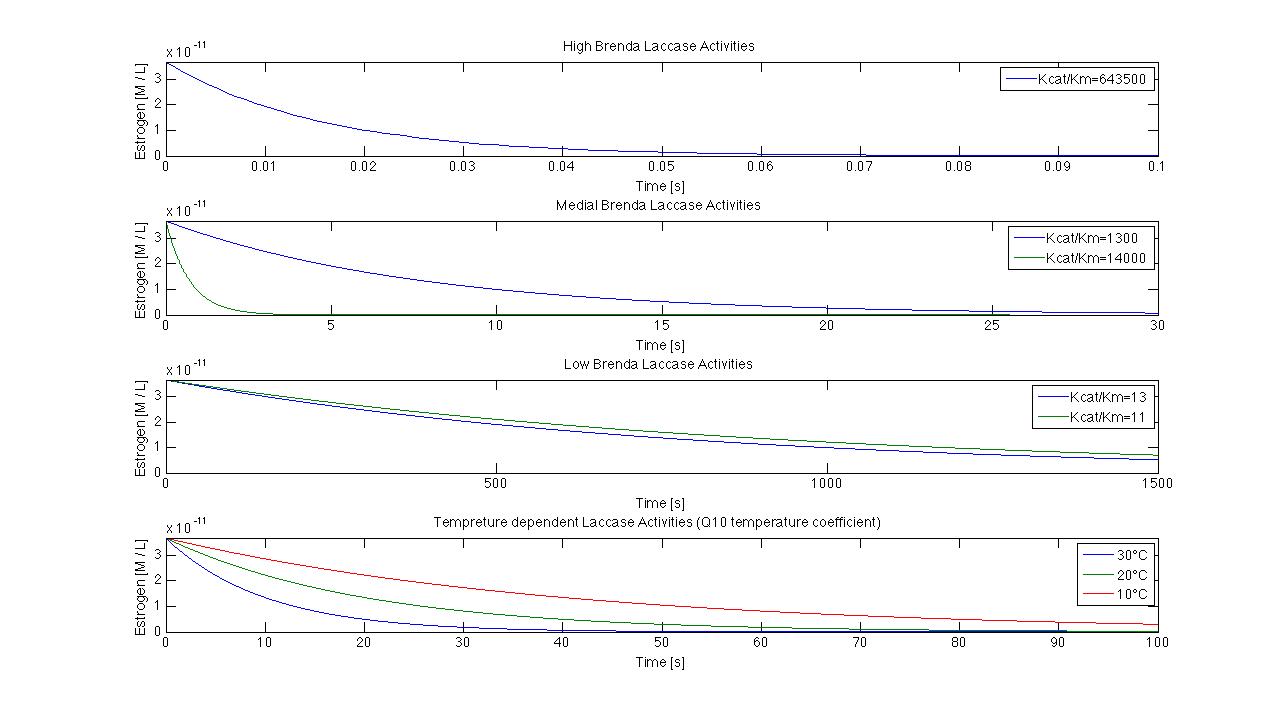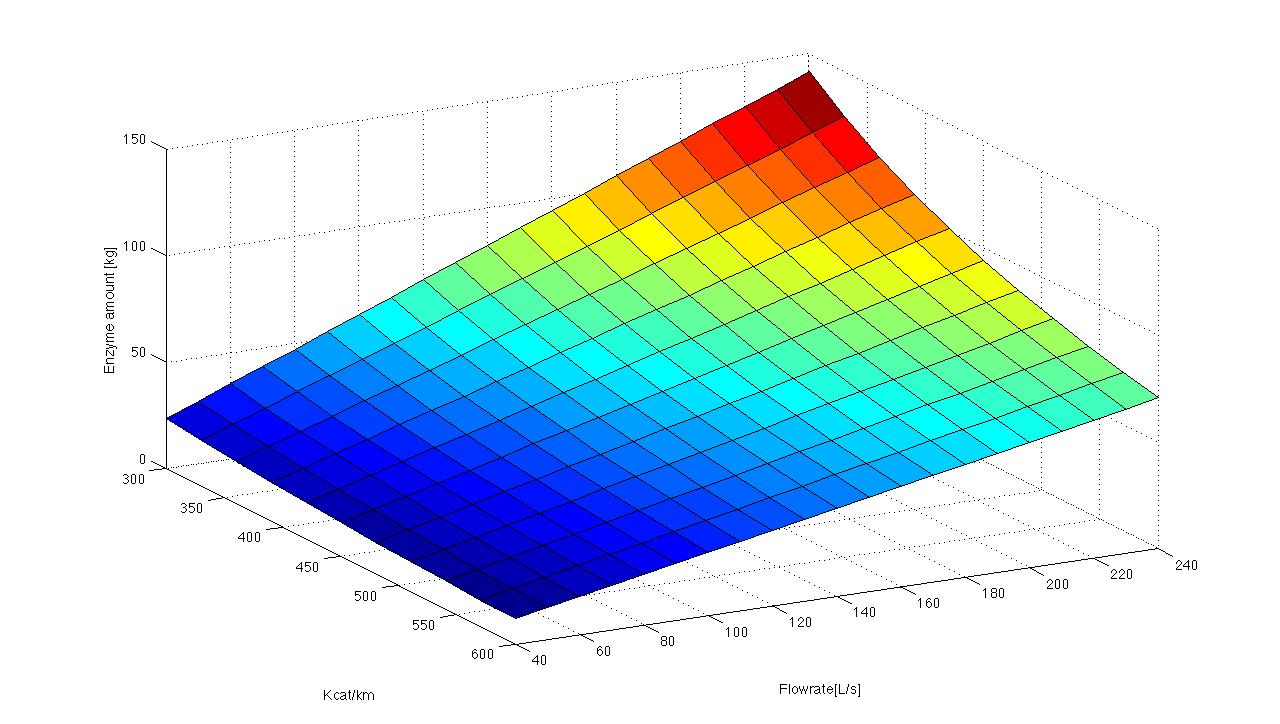Team:Bielefeld-Germany/Modell
From 2012.igem.org
(→The reaction) |
(→The reaction) |
||
| Line 16: | Line 16: | ||
==The reaction== | ==The reaction== | ||
| - | [[File:Bielefeld2012_MM. | + | [[File:Bielefeld2012_MM.png|center|300px]] |
This transformation can be found in "Stryer biochemie". This formula is suitable for very low substrate concentrations. In this case we can estimate the substrate concentrations to 1.89 ng L<sup>-1</sup>. | This transformation can be found in "Stryer biochemie". This formula is suitable for very low substrate concentrations. In this case we can estimate the substrate concentrations to 1.89 ng L<sup>-1</sup>. | ||
Revision as of 18:11, 26 September 2012
Contents |
Model of a fixed-bed reactor
In our project we plan to construct a fixed-bed reactor, where immobilized laccases degrade synthetic estrogen and other harmful substances. As a small selection we plan to caracterize our different laccases for three estrogens, three analgesics, four PAH´s, one insecticide and three possible redox mediators. If we could model the degradation of one substrate by one Laccase, we could easily replace the specific Kcat KM-1 quotient for another Laccase and the amounts of the other substrates.
We ignore the possible cofactors ABTS, syringaldazine and viuloric acid, because on the one hand thy would cause increase the costs, and one the other hand they are harmful substances too. As shown by Team Substrate Analytic TVEL0 degrades ethinyl estradiol without reox mediator. So the reaction should follow the michaelis menten kinetics.
The reaction
File:Bielefeld2012 MM.png This transformation can be found in "Stryer biochemie". This formula is suitable for very low substrate concentrations. In this case we can estimate the substrate concentrations to 1.89 ng L-1.
Extend the model with sewageplant data
Outlook
"Team Substrate Analytic" will determine Kcat KM-1. Additionaly we have the opportunity to work with a lab sewageplant. So we´re going to test our model in defined conditions.
| 55px | | | | | | | | | | |
 "
"








